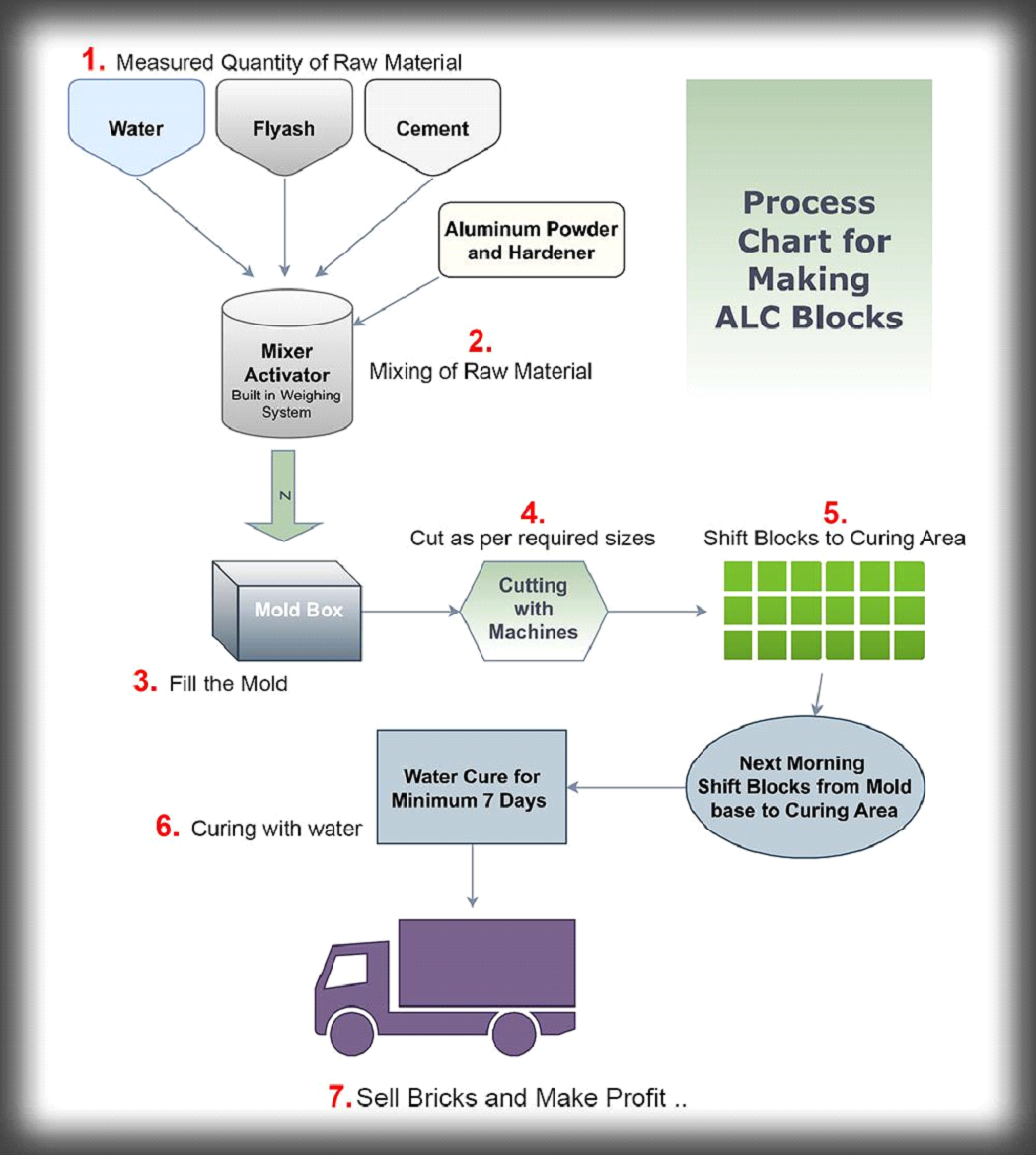- Aerated (AAC/ALC) Block Characteristics
- Difference Between AAC & ALC
- Difference between CLC and ALC
- Project Information - Is it worth starting
- ALC Manufacturing Process, Raw Material & Mix Ratios
- AAC Manufacturing process, Raw Material & Mix Ratios
- 10 Reasons to Choose Essarcon
- FAQ - Frequently Asked Questions
RAW MATERIALS AND RECIPE TO PRODUCE NON AUTOCLAVE AERATED CONCRETE (ALC/NAAC)
Main ingredients (Raw Materials)
Water
Water for concrete mixture shall have any suitable drinking water. It is preferable to water from surface sources, unsalted, soft or medium hardness. It is also preferred to provide the required amount of water lukewarm/hot for best results.
Portland Cement
Virtually all of Ordinary Portland Cement (OPC 53 Grade) suitable for the production of aerated lightweight concrete. Cement should be fresh, lumps free. Preferred use of a good standard brand.
Quick lime
Quicklime is produced by heating naturally-occurring limestone rock, which contains calcium carbonate. It is recommended to use fresh quick lime. More purity provides better results.
Fillers
As part of aerated concrete mix, fly ash/fine silica sand or dolomite can be used as filler.
- Fly ash/Pond ash - is from thermal power plants (fly ash is silica rich product, which is industrial waste obtained from thermal power plants)
- Silica sand - fine-grained, without foreign inclusions like stones, branches, particles larger than 1 mm, without silt and clay (or with a minimum content of such substances).
- Dolomite - Dolomite is a common rock-forming mineral. It is a calcium magnesium carbonate (or called Limestone flour in simple language).
Foaming Agent
Small quantity of aluminum powder is used for Foaming of concrete
Additives
Just like other concrete, additives such as activators/accelerators may be used to improve and stabilize the quality of the final product.
- Water : 200-280 Ltrs
- Ordinary portland cement : 180-280 Kg
- Quick lime : 15-30 Kg
- Fillers (fly ash/fine sand) : 350-550 Kg
- Aluminum powder : 400-500 gms
- Additives : Quantity depends on raw material properties
ALC Block Manufacturing Process
- Measured quantity of water is poured in the mixer.
- Measured quantity of fly ash (filler) is added in the mixer.
- Desired quantity of cement is mixed with fly ash (filler) slurry.
- Measured quantity of lime is added to the mix.
- Additives (if required) are poured in the mixer.
- Aluminum powder premixed with a small quantity of water is added in the mixer.
- After mixing for about 30 seconds, Prepared concrete slurry is poured in lubricated molds.
- After filling the mold, the mixer moves towards the next mold for filling (for stationary lines).
- After filling the mold, the mold moves towards pre pre-curing area and a new mold moves towards the mixer for the next fill (for conveyor lines).
- In filled mold, Concrete slurry rises (just like Bread dough) and volume increases up to desired height in 15-20 Minutes.
- After 3-5 Hrs. raised concrete gets its initial strength and mold panels are removed for the cutting process.
- Then this concrete “cake” is sliced in required sizes Horizontally and then Vertically with cutting machines.
- After cutting the sliced concrete blocks are left overnight for the initial hardening process.
- Next day these blocks are removed from the mold base and shifted to a curing area for natural (water) curing.
- Curing is done by simply spraying water on a stack of blocks, and keeping it wet for a minimum for seven days.
- After curing and drying blocks are ready for shipping
